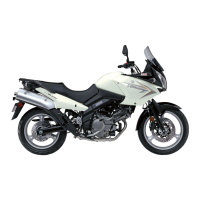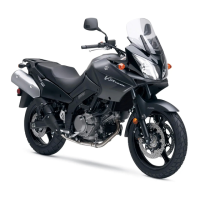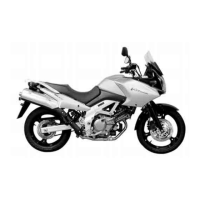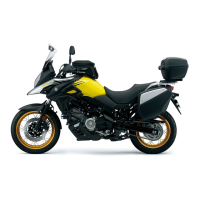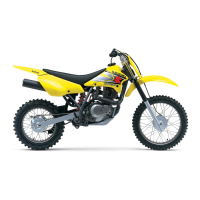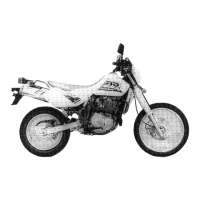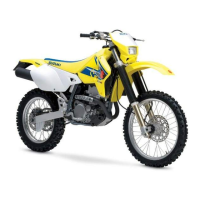1-3
IF A COLLISION IS IMMINENT,
DO SOMETHING
Many riders fear locking up their
brakes or haven’t learned to
swerve to avoid an accident.
Many inexperienced riders (and
too many seasoned riders) use
only their rear brake in an emer-
gency, resulting in unnecessary
impacts in some cases and
unnecessarily high impact speeds
in other cases. Your rear brake
can only provide about 30% of
your motorcycle’s potential stop-
ping power. The front and rear
brakes can and should be used
together to maximize braking
effectiveness.
Experienced motorcyclists learn
to “cover” the front brake lever by
lightly resting a couple of fingers
over the lever when riding in traffic
and near intersections to give
their reaction time a head start.
Emergency stopping and swerv-
ing are techniques that you
should practice and master before
you find yourself in an emergency
situation. The best place to prac-
tice such techniques is in a con-
trolled environment such as the
Motorcycle Safety Foundation’s
(MSF) rider training courses. The
MSF’s Motorcycle Rider Courses
(fundamental techniques) and
Experienced Watercourses
(advanced strategies) present
hands-on instruction of the basic
principles of motorcycling and a
variety of accident-avoidance
maneuvers. Even a seasoned
motorcyclist can improve his or
her riding skills, and pick up a few
new skills, through these courses.
Some insurance companies even
offer discounts to course gradu-
ates.
SPECIAL SITUATIONS REQUIRE
SPECIAL CARE
Of course, there are some times
when full-force braking is not the
correct technique. When the road
surface is wet, loose, or rough,
you should brake with care. When
you’re leaned over in a corner,
avoid braking. Straighten up
before braking. Better yet, slow
down before entering a corner.
In these situations, the traction
available between your tires and
the road surface is limited. Over-
braking when traction is limited
will cause your tires to skid, possi-
bly resulting in loss of directional
control or causing you and your
motorcycle to fall over.
KNOW YOUR LIMITS
Always ride within the boundaries
of your own skills. Knowing these
limits and staying within them will
help you avoid accidents.
A major cause of accidents involv-
ing only a motorcycle (and no
cars) is going too fast through a
turn. Before entering a turn, select
an appropriately low cornering
speed. Even on straight roads,
ride at a speed that is appropriate
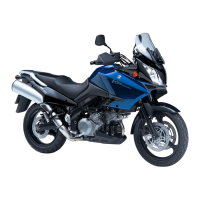
